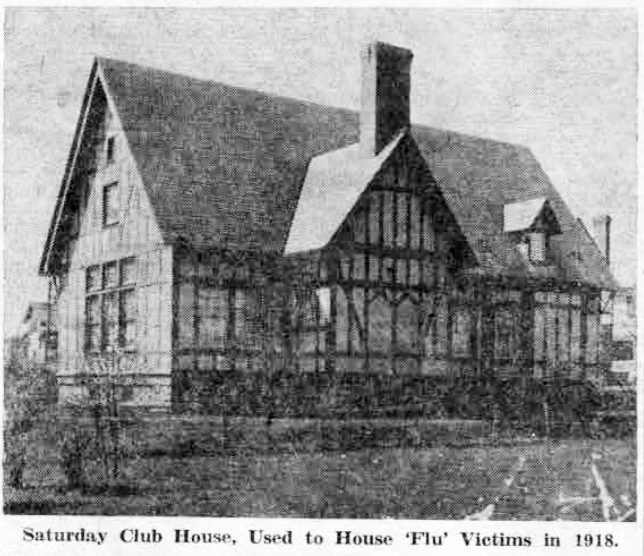 Front page news in the October 1, 1918 issue of “The Suburban” was a terse and dramatic account of the onset of the most terrifying epidemic this community has ever known. In late September and early October of that year influenza swept the community, as it did many neighboring sections.
Front page news in the October 1, 1918 issue of “The Suburban” was a terse and dramatic account of the onset of the most terrifying epidemic this community has ever known. In late September and early October of that year influenza swept the community, as it did many neighboring sections.
The story of how Wayne met the crisis is contained in the annals of two of the township’s outstanding organizations, the Saturday Club, and the Wayne Branch, American Red Cross.
In the clubhouse of the Saturday Club on West Wayne avenue, an emergency hospital was set up early in October, 1918, by government orders, and it was through the efforts of the local Red Cross that it was equipped and manned.
According to this early October issue of “The Suburban,” the local situation had already become critical, with several deaths on record. By order of the Board of Health, schools and churches had been closed and all public gatherings, including performances at the Wayne theater, were forbidden. The police force was hard hit by illness in its own ranks, with only two officers and Captain Martin Mulhall on duty. The ranks of the postoffice personnel were also much depleted.
It was in this crisis that the Saturday Club made the offer of the use of its clubhouse to the government. The building, with its high ceilings and ample ventilation would prove well adapted to the purposes of a temporary hospital. Arrangements were soon under way, with Mrs. Marshall H. Smith acting in her capacity as president of the local club group and by Mrs. Robert G. Wilson and Miss Grace Roberts acting for the Red Cross.
Next came the matter of equipping the new hospital. Cots and other supplies were brought from Red Cross headquarters in Philadelphia by Wayne Iron Works’ trucks, and a Red Cross ambulance was placed at the disposal of the newly established hospital. Within short order, the Bell Telephone Company and the Counties Gas and Electric Company had installed additional facilities where they were needed.
Within 24 hours of the inception of the plan, the emergency hospital was completely set up, with 29 beds in orderly rows and ready for occupancy. In a few hours these beds were all filled, several of them with patients whose influenza had already turned into pneumonia. Many more, who should have been hospitalized, had to be refused through lack of beds.
Facilities were then increased by the erection of a large tent on the Saturday Club grounds, with beds reserved for children, and an emergency diet kitchen established in the basement of the clubhouse. “Invalid food” was given away at cost, or even given free when family financial circumstances warranted. All food was contributed by members of the community.
In all, there were now 50 beds in the clubhouse itself and its adjoining tent. Mrs. Robert G. Wilson, herself a trained nurse, was in charge for the Wayne Red Cross. Other local trained nurses volunteered their aid, as did four deaconesses from the Presbyterian Deaconess House in Philadelphia. Among others who helped were those who had taken home nursing and first aid courses with the local Red Cross branch.
(To be continued)
